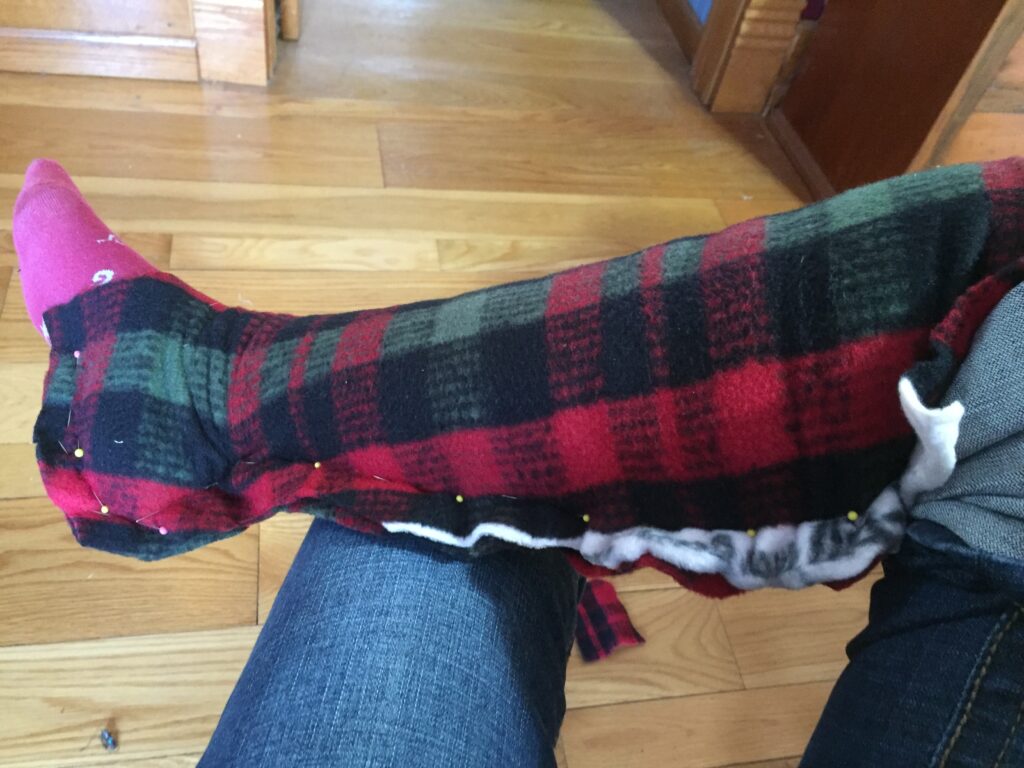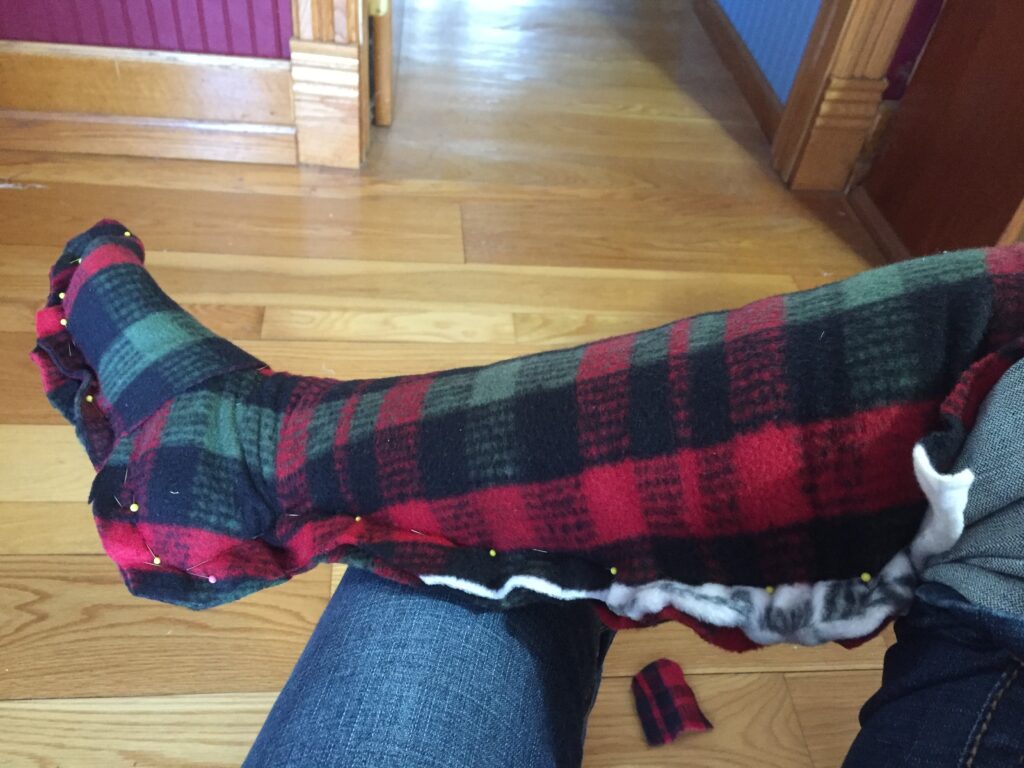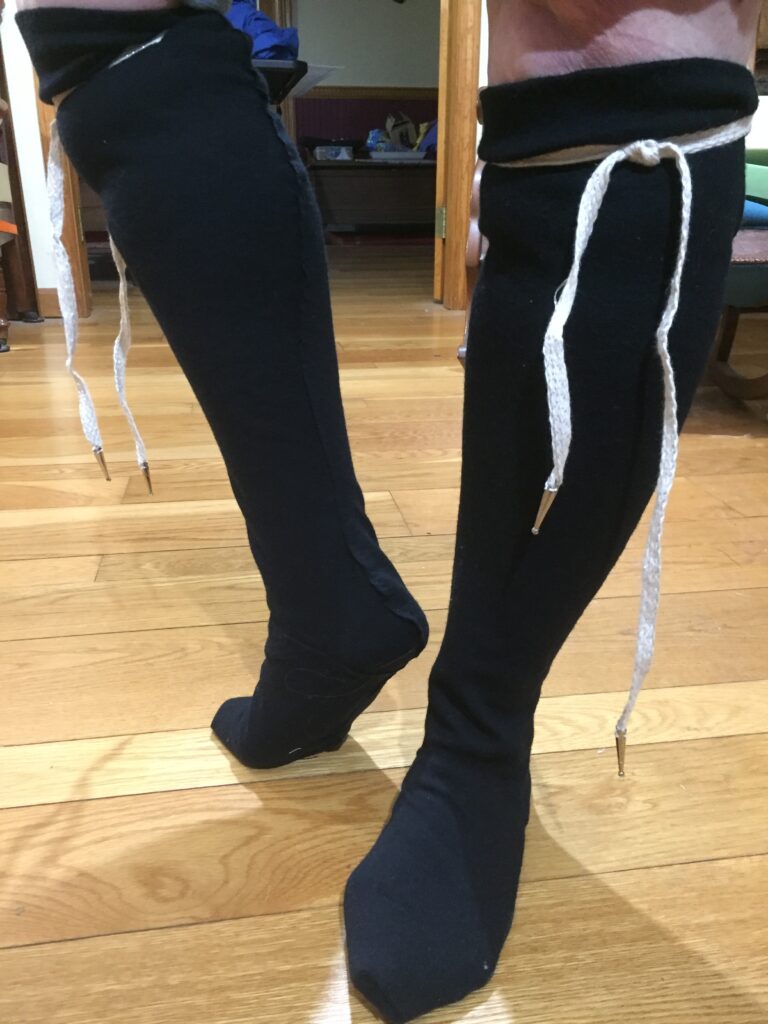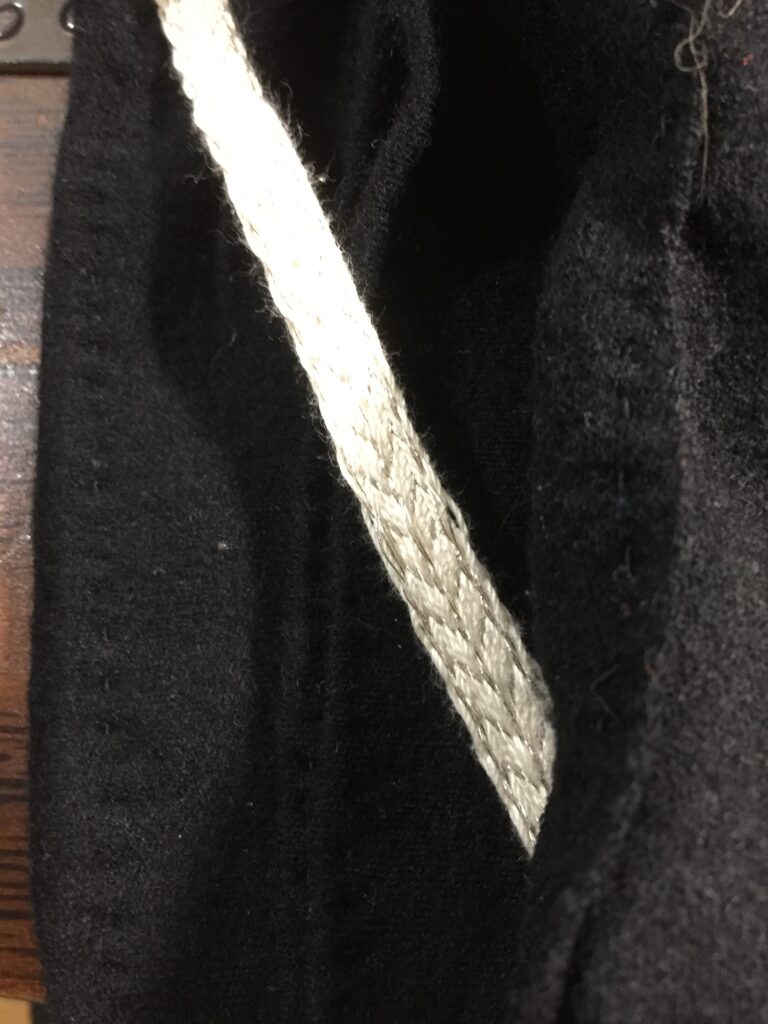In researching the hose, there is a definite difference in cut between hose of the 12C and hose of the 14C. Hose from the 12C appears to consist of two parts one that covers the leg and the back half of the foot the other covers the front half of the foot.




From left to right the hose of Emperor Heinrich III (1056), Archbishop Hubert Walter (12C), William II of Sicily (1166-1189), and Pope Clement II (1047). Some are cut on the bias, some are not, fabrics are linen, samite, or wool.
For my hose, I used a fine black wool and did not cut it on the bias as it had enough stretch without needing to do this. I first made a pattern using a piece of fleece with a similar weight and with similar stretch as the wool. From this, I made a paper pattern to use for cutting the wool.
Since two of the seams were going to run under the foot, and the wool is not prone to fraying, I overlapped the two edges and whip stitched the raw edges to the fabric the raw edge overlapped. This gave a flatter seam and was actually not uncomfortable to walk on. The top edge was finished with a single fold hem. Again these techniques were taken from the Museum of London book “Textiles and Clothing c.1150-c.14500”.
Several of the examples showed the garters attached to the hose, and since I am prone to misplacing fiddly bits, I thought this was a great idea! I used some leftover tablet weaving for my garters finishing the ends with aiglets.






